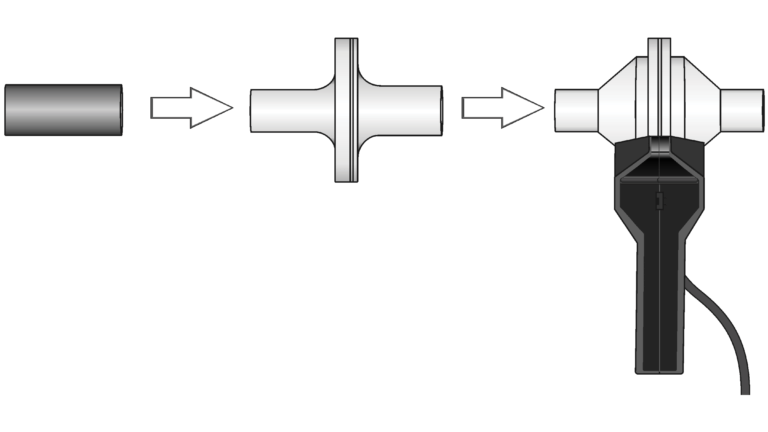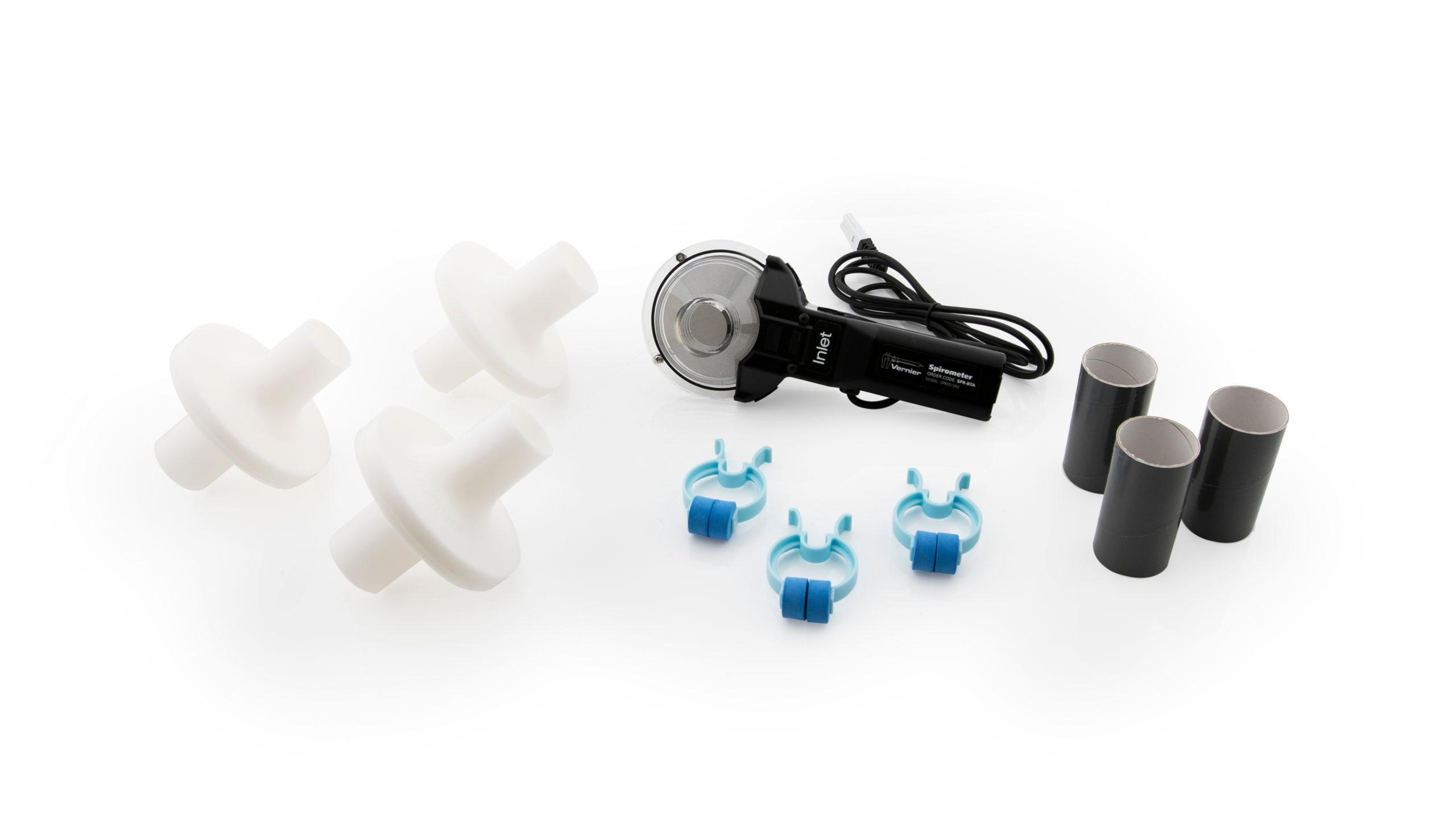
Introduction
Spirometry is a valuable tool for analyzing the flow rate of air passing into and out of the lungs. Flow rates vary over the course of a respiratory cycle (a single inspiration followed by a single expiration) and are dependent upon a variety of factors. Maximal inspiration results from contraction of the diaphragm downward and the movement of the ribs upward and outward, both of which expand the chest cavity. Forced expiration is the result of the rapid contraction of chest and abdominal muscles, as well as the relaxation of the diaphragm.
Objectives
In this experiment, you will
- Obtain graphical representation of a flow volume loop.
- Find the forced expiratory volume at 1 s (FEV1) and the forced vital capacity (FVC).
- Calculate FEV1/FVC.
- Find the peak expiratory flow rate (PEF).
- Create flow volume loops for several clinical scenarios.
Sensors and Equipment
This experiment features the following sensors and equipment. Additional equipment may be required.
Ready to Experiment?
Ask an Expert
Get answers to your questions about how to teach this experiment with our support team.
- Call toll-free: 888-837-6437
- Chat with Us
- Email support@vernier.com
Purchase the Lab Book
This experiment is #21 of Human Physiology with Vernier. The experiment in the book includes student instructions as well as instructor information for set up, helpful hints, and sample graphs and data.


